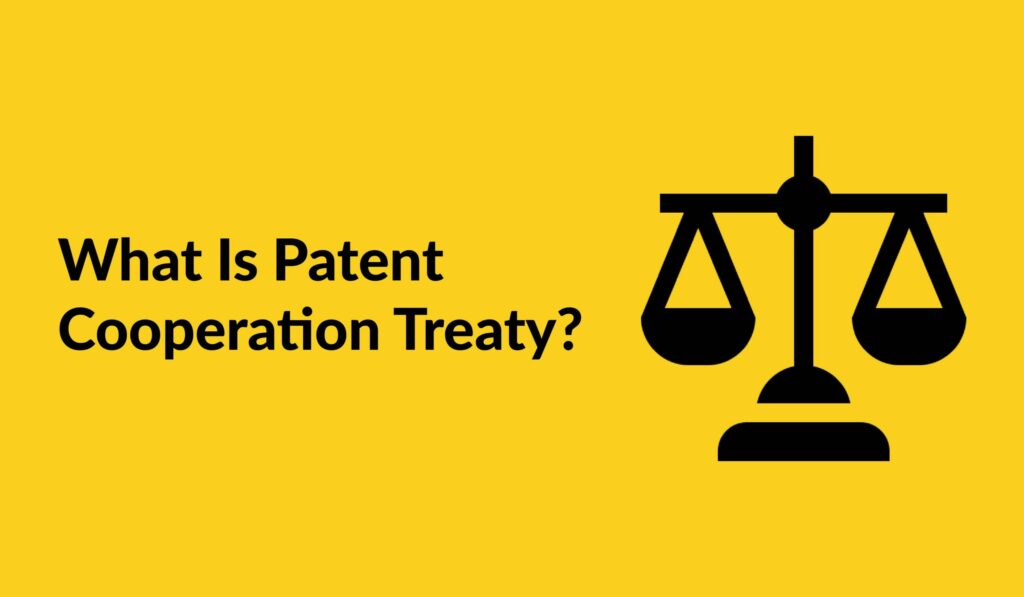What Is Patent Cooperation Treaty?

Introduction
As we know that Intellectual Property is territorial in nature, so does the patent. For the protection of the invention worldwide the Paris Convention, 1883 was the first International Treaty that provides a way to protect the invention in other contracting states based on the Basic Application filed in some other contracting states. To simplify the procedure for obtaining patent protection in many countries and to make the procedure more economical and efficient the Patent Cooperation Treaty was signed on 19th June 1970. India has signed both the Agreement on the same date i.e. on 12th September 1998.
Paris Convention
The Paris Convention is one of the first intellectual property treaties that recognize intellectual property internationally for the first time. The Convention applies to industrial property including patent, trademark, and industrial design. The two main fundamental provisions of the Convention include: National Treatment and Right of Priority.
Here, the Right of Priority provides you a way to protect your invention or mark at the international level. It gives you the right to claim your priority date in any other country within 12 months of filing your Basic Application. In other words, based on a standard initial application submitted in one of the Contracting States, the applicant may seek protection in any of the other Contracting States within a specific amount of time i.e. 12 months for patents. These additional applications will be treated as if they were filed on the same day as the first. The twelve-month period gives you sufficient time to decide in which countries you want to seek protection.
Figure 2: Procedure under Paris Convention (Image Source: WIPO Website)
Patent Co-Operation Treaty
Patent Co-Operation Treaty makes possible to seek patent protection in 153 contracting states through One Application, filed before One Patent Office, and in one language i.e. (ONE-AOL). The treaty provides two ways to file an International Patent Application: one either through the national patent office and the other through the International Bureau of WIPO. The Procedure of filling International Application can be summarized as below:
- Filling of PCT Application: The PCT Application must be filed before the National Patent office or IB of WIPO within 12 months from the filling date of Basic Application. However, Indian Patent Law provides that a PCT application should be filed within 6 weeks from the Date of Priority.
- International Search Report: An international search is conducted for the PCT application. The search was conducted by International Searching Authority (ISA) that identifies prior art and makes an opinion that whether your invention is patentable or not. The report and opinion should be published within 16 months from the date of filing of the national application.
- International Publication: Like publication of regional patent application, PCT application is also internationally published within 18 months from the filing date of the national application.
- International Preliminary Examination and Supplementary International Search: The applicant can within 22 months from the filing date of the national application opt for International Preliminary Examination or Supplementary International Search. The International Preliminary Examination and Supplementary International Search is opted to make sure that their invention qualifies patentability criteria and there is no prior art related to their invention. These examinations are more comprehensive than the International Search Report voluntary generated by ISA.
- International Preliminary Report on Patentability and Supplementary International Search Report: Within 28 months from the filing date of the national application the International Searching Authority (ISA) issues International Preliminary Report and Supplementary International Search Report.
- Enter National Phase: At the end, and within 30 months from the filing date of the national application the PCT application enters National Phase in the designating countries where the applicant seeks protection. The International Search Report, International Preliminary Report, and Supplementary International Search Report give you a clear picture to decide whether you want to enter into the national phase or not. After entering into the national phase, the PCT application is subject to the National law of the country.
Figure 2: Procedure under PCT (Image Source: WIPO Website)
Paris Convention and PCT: A Comparison
It is to be noted that there is a stark difference between the Paris Convention and Patent Cooperation Treaty. The Paris Convention gives you only the Right of Priority to claim priority date in any other contracting states based on the basic application filled in some other contracting states. However, the PCT provides a wholesome mechanism to protect your invention worldwide through a single application. It is to be noted that neither PCT nor Paris Convention guarantees you protection in another country since after entering into National Phase the application is subject to the National law of that country.